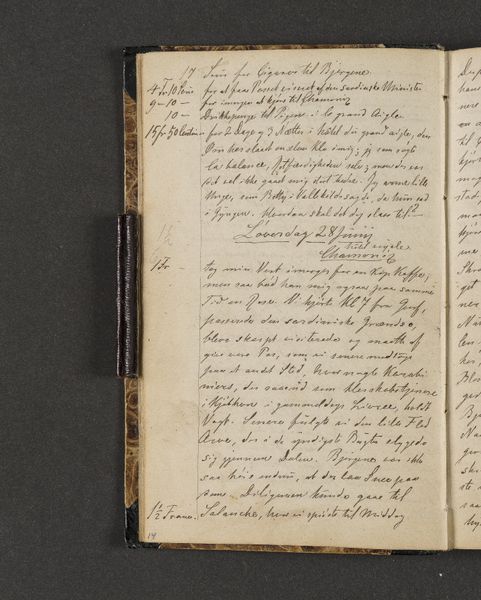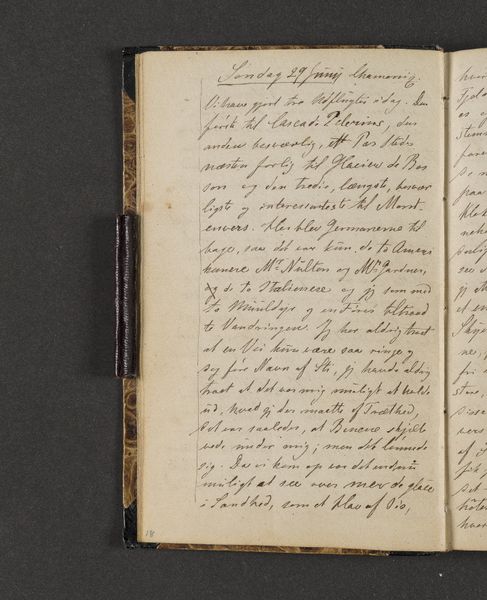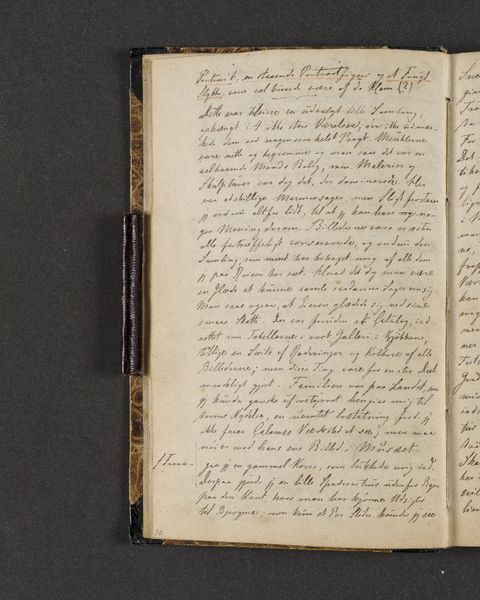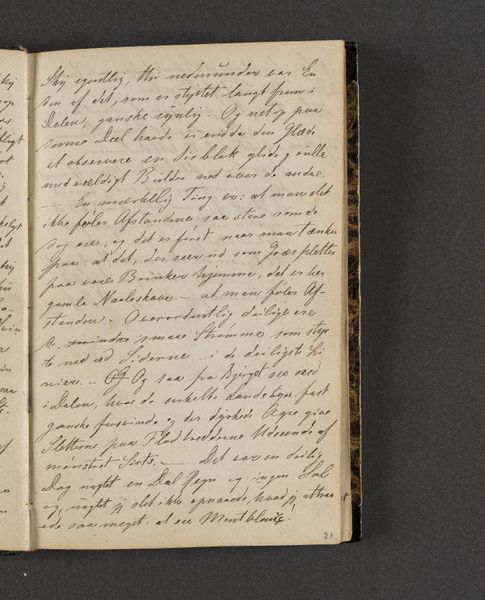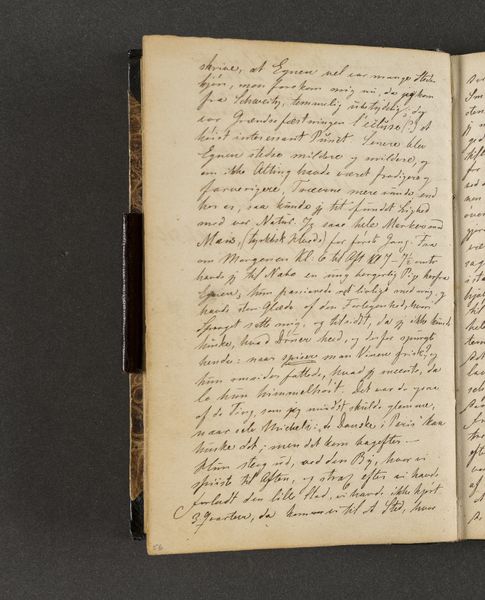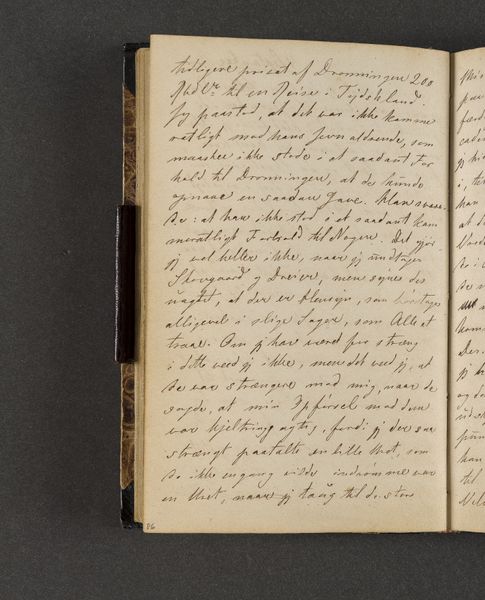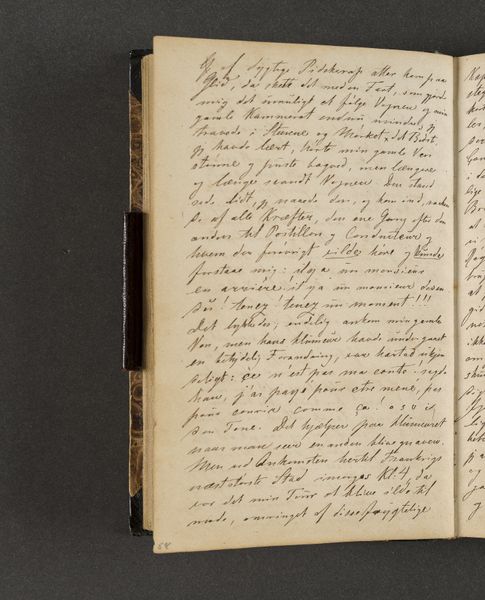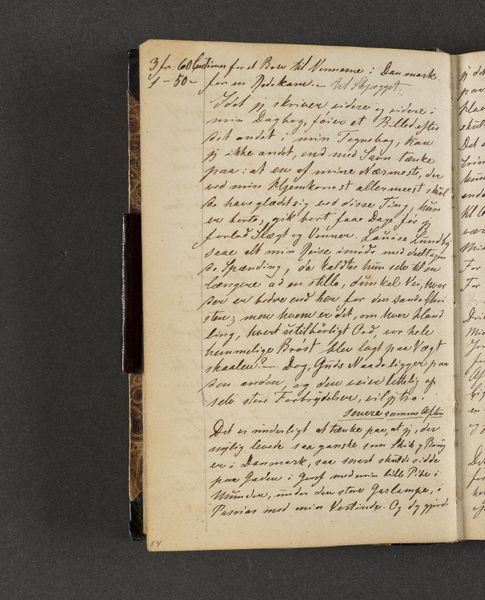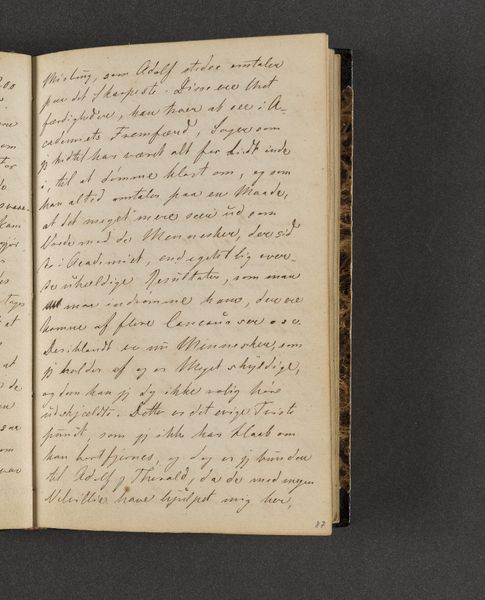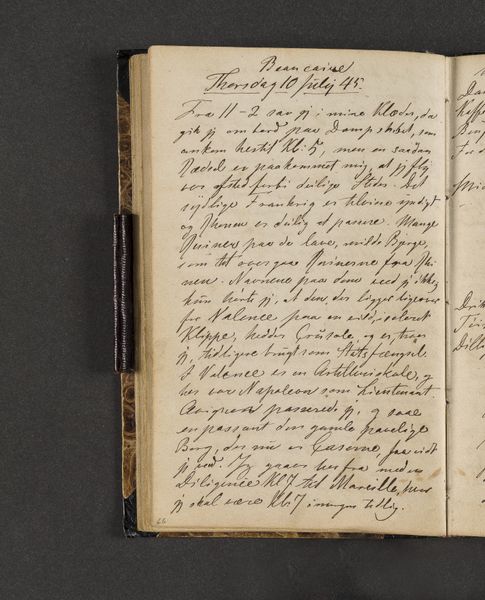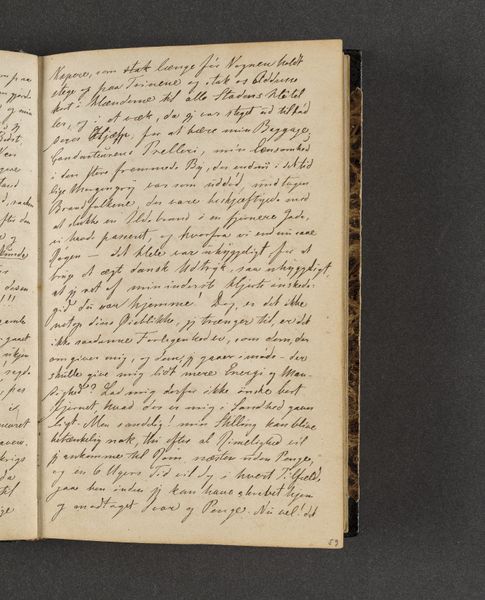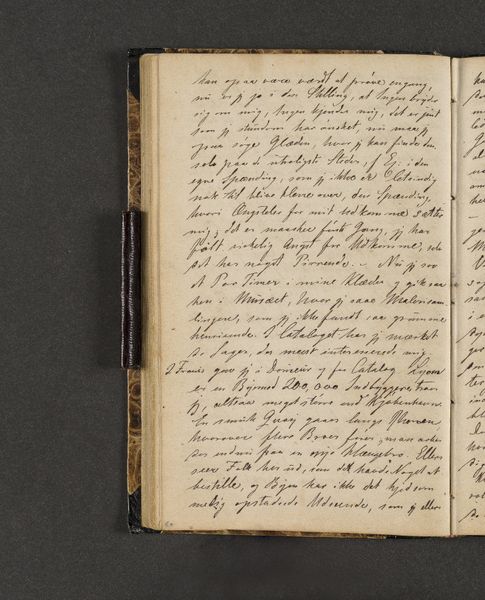
drawing, paper
#
drawing
#
paper
#
romanticism
Dimensions: 161 mm (height) x 103 mm (width) x 11 mm (depth) (monteringsmaal)
Curator: Here we have "Rejsedagbog" or "Travel Journal," a drawing created by Johan Thomas Lundbye in 1845. It’s part of the collection at the SMK, the National Gallery of Denmark. Editor: My initial reaction is to the intimate scale of the object. I can imagine the artist with this journal recording immediate observations, thoughts and impressions as they unfolded. The brown leather looks soft, and I wonder about the wear. Curator: The artist certainly meant for this to be held, experienced, and shared; note the romantic style typical of the period. Lundbye was capturing the feeling and personal interpretation of travel over a photorealistic account. He’s more focused on emotion, evoking what a specific place feels like through expressive line work. Editor: Let’s think about the drawing medium. The marks made with the drawing tools, likely graphite or ink on paper, suggests speed, sketching and being present. I see not just image making but also a strong evidence of mark-making, so his labor becomes present as well. Did the ready availability of drawing paper enable a democratisation of the image-making process? Curator: I see this as an example of art’s translation of personal experience into aesthetic form. He uses light and shadow to suggest depth and mood, a technique refined over time and consistent with formal art education, which has been gatekept to many, up until fairly recently. I see an exercise of skill put toward artistic purpose. Editor: Perhaps this journal could be a study in accessible creativity through materials. It challenges how we traditionally see Romantic art production, beyond oil paints in the studio and into something accessible, mobile, tactile. How would you evaluate its presence amongst art today, when more and more focus is being drawn to access? Curator: It reveals the subjective underpinnings of a supposedly objective world. I still think the artistry, however rooted in mundane materials, rises above the simplicity of access to these tools and is meant to draw an emotion above other things. Editor: Yes, and it opens up discussion around both art history and our access to materiality.
Comments
No comments
Be the first to comment and join the conversation on the ultimate creative platform.
